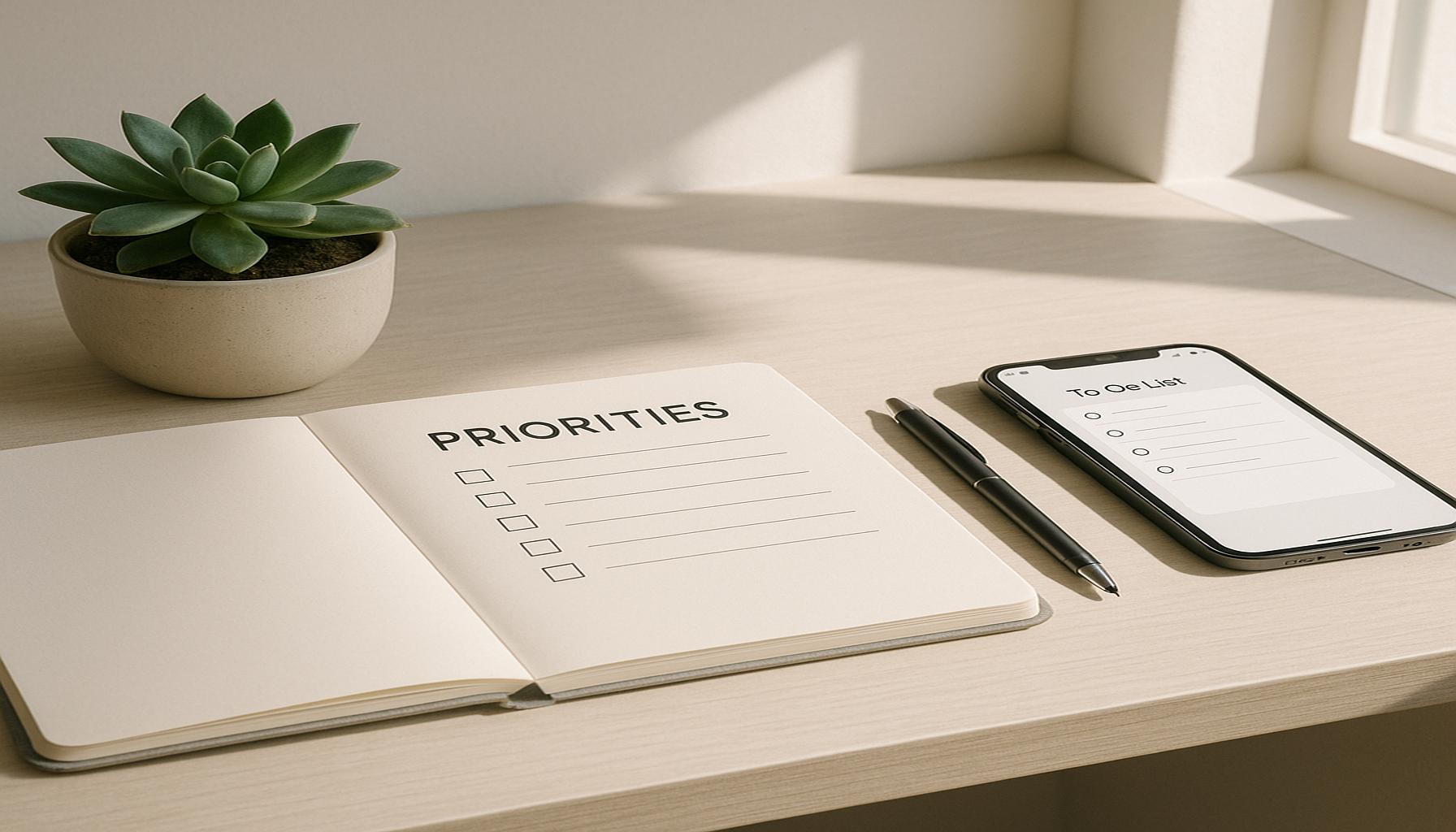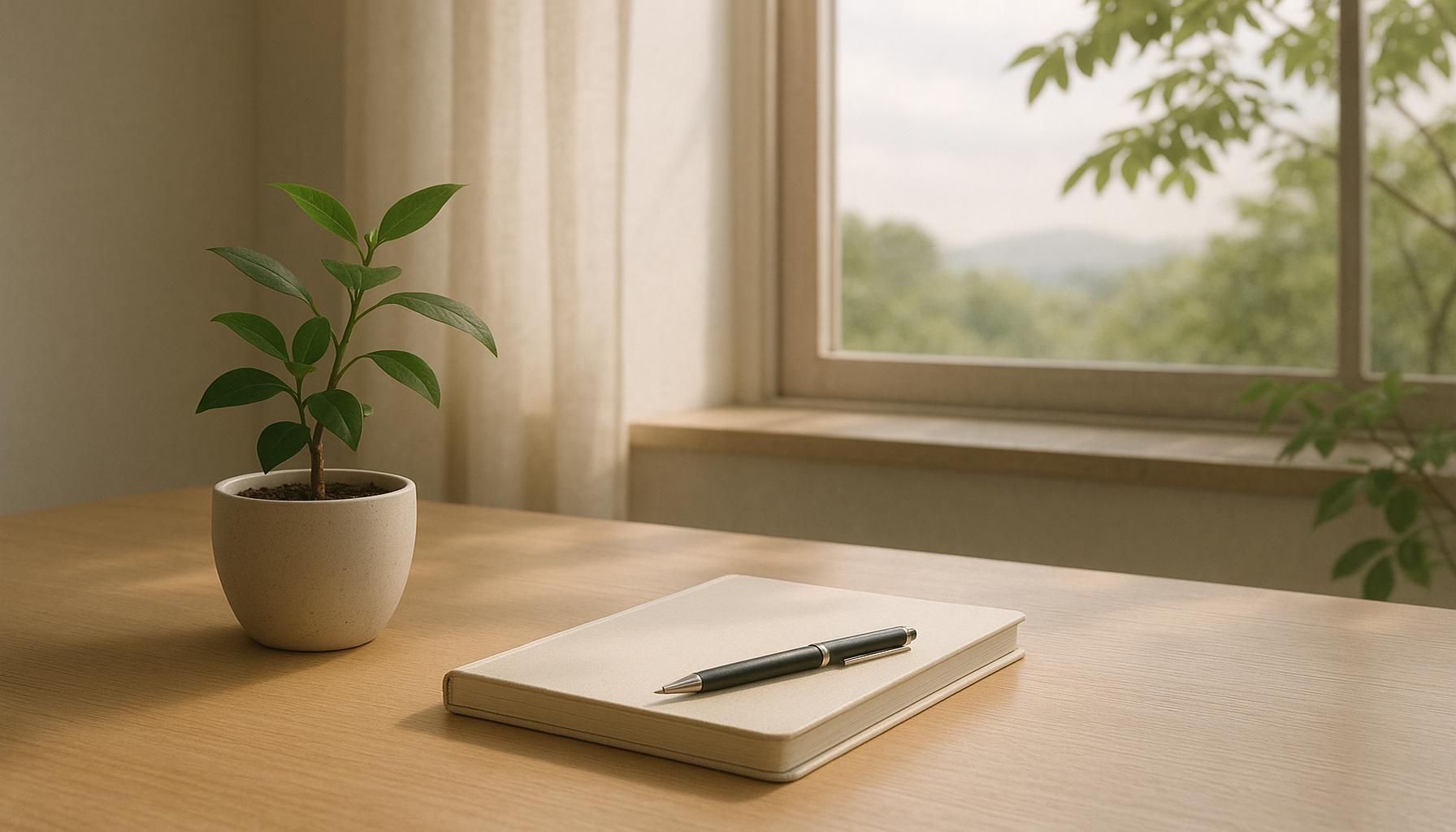The Journey of Detachment: How to Prioritize What Stays and What Leaves in Your Personal Space

Understanding the Significance of Detachment
In today’s fast-paced world, the concept of detachment transcends mere physical space. It involves a profound journey towards understanding what genuinely holds value in our lives and identifying elements we may need to let go of. The accumulation of clutter—both physical items and emotional baggage—can weigh us down and significantly impact our mental well-being.
This journey is not merely about removing items from our physical spaces; it is about a deeper introspective examination of our attachments and habits. For example, you may own several clothes that remind you of past relationships, accomplishments, or even failures. Each time you see those items, you might evoke feelings of nostalgia or regret, complicating your present state of mind. Thus, emotional attachment plays a significant role in our decision-making processes about what to keep and what to release.
The Role of Functionality
Next is the consideration of functionality. Analyze the objects in your living space—do they serve a genuine, practical purpose, or are they simply taking up room? In the context of American culture, where consumerism often values volume over utility, it becomes essential to evaluate whether our belongings enhance our lives or offer merely sentimental clutter. For instance, a new gadget may seem appealing at the moment of purchase, but if it’s been collecting dust on a shelf for months, it might be time to reconsider its place in your life.
Creating Aesthetic Harmony
A further dimension to explore is aesthetics. Does your environment reflect your personal style and values? Your home should be a sanctuary that resonates with who you are today, rather than a museum of past possessions. Engaging with your space in this way can encourage positivity and tranquility, serving as a canvas for your current self rather than a repository of yesterday’s memories.
Central to this reflection is the understanding of prioritization. By recognizing what truly deserves a place in your life, you can create a harmonious personal environment. This conscious choice about what remains and what is let go fosters a healthier mindset and allows for personal growth. The journey of detachment can also lead to a newfound appreciation for the essentials in life, enhancing feelings of contentment and clarity.

In this article, we aim to offer practical strategies for assessing your possessions and adopting a minimalist attitude. We invite you to join us as we examine tangible methods for gracefully navigating the challenge of letting go. Ultimately, discovering the freedom that arises from making conscious choices about what stays and what leaves can be liberating, enriching your life in unexpected ways.
DISCOVER MORE: Click here to learn about creating peaceful environments</
Evaluating Your Attachments
The journey of detachment begins with a careful evaluation of your attachments. Establishing emotional connections to belongings is a common human experience; however, recognizing when such attachments become burdensome is essential. To navigate this process effectively, it’s helpful to categorize your items into a few discernible groups. Start by creating three main categories:
- Necessities: Items that serve daily functions and enhance your quality of life.
- Sentimental Items: Items that hold emotional significance but may not serve a practical purpose.
- Clutter: Items that no longer serve you, either functionally or emotionally.
By clearly defining these categories, you can begin to see which items truly deserve a place in your life. Reflecting on the necessities may seem straightforward; these are the items you can’t function without. However, it is vital to challenge yourself about what you genuinely need. For example, if your wardrobe is overflowing but you only wear a fraction of your clothing regularly, this disparity could signal that it’s time to reassess your possessions.
The next step involves diving deep into the realm of sentimental items. These may include gifts from loved ones, keepsakes from past experiences, or heirlooms passed down through generations. While it’s natural to feel attached to these items, determine if they contribute positively to your current life. Consider asking yourself questions such as: “Does this item bring me joy or remind me of happier times?” or “Am I keeping this out of guilt or obligation?” Recognizing the reasons behind your attachment can illuminate which of these items still hold genuine value in your life.
Finally, examining the clutter in your space can be quite liberating. Clutter often accumulates unnoticed, slowly taking a toll on your mental state. Items that are broken, outdated, or no longer resonate with your current values can create a sense of chaos in your environment. To assess what constitutes clutter in your life, look for items that evoke feelings of stress or anxiety every time you see them. These items may include expired products, outdated technology, or clothing that no longer fits. A simple practice involves creating a designated box for these items. If you haven’t used or worn something in the last year, it may be time to let it go.
By categorizing your belongings and closely examining your attachments, you are setting a foundation for a more intentional lifestyle. The journey of detachment is not solely about letting go of physical items; it is about nurturing your emotional well-being and making space for what truly enriches your life. As your environment transforms, you will likely find that it paves the way for new opportunities, clearer mental clarity, and increased personal growth.
The Journey of Detachment: How to Prioritize What Stays and What Leaves in Your Personal Space
As we navigate through life, our personal space evolves, and so do our attachments to various belongings and relationships. To foster a more peaceful environment, it is essential to assess not just the physical clutter but also the emotional baggage that accompanies it. This journey towards detachment begins with a mindful evaluation of what truly adds value to our lives.
One effective method to approach this is through the principle of joy-sparking items. Inspired by Marie Kondo’s philosophy, this technique encourages individuals to hold each item and consider whether it brings joy or serves a meaningful purpose. This process can deepen your understanding of what you value, making it easier to let go of unnecessary belongings. Emotional clarity emerges as you identify items tied to past experiences or memories, allowing you to prioritize your space in a more intentional way.
Moreover, it is essential to recognize that detachment is not synonymous with denial. Letting go encompasses a journey of acceptance, where you acknowledge past experiences and learn from them. This can foster resilience, giving you the strength to move forward without feeling tethered to the past. By embracing such principles, you create a personal sanctuary that reflects your current state of being and aspirations.
| Category | Key Features |
|---|---|
| Mindful Evaluation | Assessment of items based on emotional and practical value. |
| Joy-Sparking Items | Focus on keeping belongings that bring joy and add purpose. |
| Emotional Clarity | Understanding attachments and their impact on personal space. |
| Acceptance | Acknowledging past experiences to foster growth. |
In summary, the journey of detachment is about embracing change. By incorporating strategies that prioritize the significance of items and relationships, it is possible to cultivate an environment that supports personal growth and well-being. This practice can extend beyond physical decluttering to encompass emotional readiness, paving the way to a clearer, more focused life.
DISCOVER MORE: Click here to learn about creating peaceful environments</
Implementing the Art of Letting Go
Once you have categorized your belongings, the next step in your journey of detachment is implementing the art of letting go. This process can be challenging, as it often requires confronting emotions tied to your possessions. To ease this transition, establish a timeline and set manageable goals to avoid feeling overwhelmed. For instance, allocate specific weekends or days after work to tackle different areas of your home, whether it be your closet, basement, or even the garage.
A practical approach to decluttering is the “one-in, one-out” rule, where for every new item you acquire, you commit to removing an existing one. This strategy not only prevents additional clutter from building up but also encourages mindful consumption. Additionally, create a checklist or roadmap of items you plan to part with, prioritizing those that are most burdensome to you. This not only keeps you accountable but also provides a sense of accomplishment as you check off completed tasks.
When it comes to deciding how to let go, consider various options tangible to your community and the environment. Donating to local charities, hosting a garage sale, or using online marketplaces can give a second life to items you no longer need. According to a survey by the non-profit organization Goodwill, Americans donate over 5.5 billion items each year, emphasizing the positive impact of decluttering through charity. By giving, you foster a sense of connection and purpose in your detachment journey, knowing your belongings can bring joy to others.
For those items that are broken or beyond repair, remember that recycling is a viable option. Many cities in the United States have specific drop-off centers or community programs dedicated to recycling electronic devices or household goods. Taking the extra step to dispose of these items responsibly can alleviate feelings of guilt associated with throwing away things you once cared for.
Another essential aspect of detachment is mindfulness. As you begin to remove items from your space, practice living in the moment. Engage in reflection as opposed to dwelling on regrets. Ask yourself how each item you are letting go of served you in the past and how it aligns with the person you want to become. Mindfulness promotes self-awareness and can aid in foregoing emotional ties to material possessions.
Social influences also play a role in your environment. Surrounding yourself with individuals who embrace minimalism or consciously curate their belongings can inspire you to continue your journey. Sharing your experiences with friends and family can also create a ripple effect, encouraging them to evaluate their own attachments and possibly join you in the process of letting go.
Ultimately, the journey of detachment is not merely about eliminating what you own but about unlocking your potential to live more freely and intentionally. It allows the space for growth, creativity, and new experiences to flourish, enabling you to shape a personal space that reflects who you truly are. By prioritizing what stays and what leaves, you move closer to a life that embodies simplicity and serenity.
DISCOVER MORE: Click here to enhance your productivity
Conclusion: Embracing Freedom Through Detachment
The journey of detachment is not simply about clearing clutter; it is a profound exploration of our values, priorities, and aspirations. By understanding the significance of what truly matters in our lives, we cultivate a personal space that resonates with our authentic selves. As you embark on this transformative journey, remember to embrace patience and self-compassion. Letting go of the past requires courage, and it is essential to acknowledge the emotions that arise along the way.
A key takeaway is to recognize that decluttering opens up pathways for new experiences and growth. Each item removed from your space can symbolize a step toward less stress and more clarity, making room for creativity and new connections. Engaging in practices such as mindfulness not only supports this process but also fosters a deeper connection with your intentions, ensuring that your space reflects who you are becoming.
Additionally, the importance of community and sustainability should not be underestimated. By choosing to donate, recycle, or share your items, you contribute to a larger purpose, impacting not only your life but the lives of those around you. This creates a sense of fulfillment and inspires others to embark on their own journeys of detachment.
Ultimately, the journey of detachment empowers you to prioritize with intention, helping you shape a peaceful, organized personal space that resonates with your goals and desires. As you take these steps, you will undoubtedly find that the act of letting go is just as vital as what remains, inviting you to live a life enriched by meaning and simplicity. So, take a deep breath, and step into the freedom that comes with the art of detachment.


